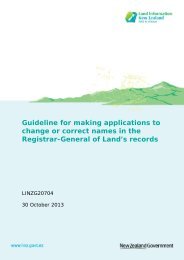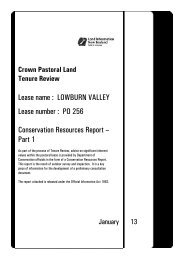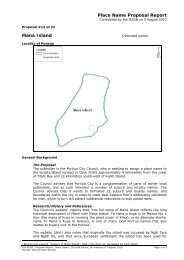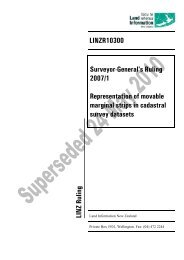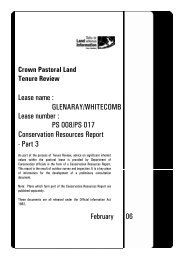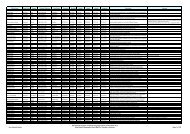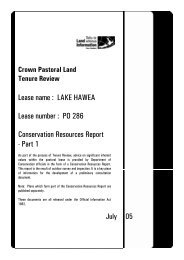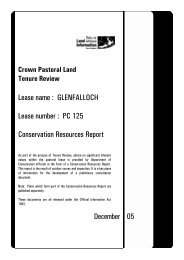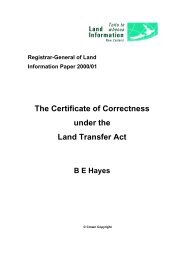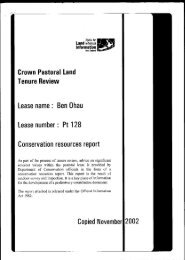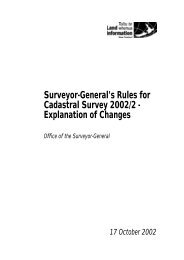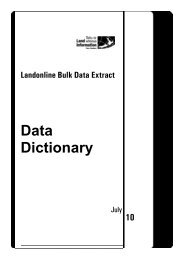Middle Hill Pastoral Lease - Land Information New Zealand
Middle Hill Pastoral Lease - Land Information New Zealand
Middle Hill Pastoral Lease - Land Information New Zealand
Create successful ePaper yourself
Turn your PDF publications into a flip-book with our unique Google optimized e-Paper software.
“RELEASED UNDER THE OFFICIAL INFORMATION ACT”<br />
2.4.4 Problem Plants<br />
Introduced plants that may have an important effect on indigenous plant communities on the<br />
property, and that can be controlled or contained, are listed and discussed below. Other<br />
ubiquitous naturalised species for which containment or control are probably impractical,<br />
such as mouse-ear hawkweed and pasture grasses, are not discussed here but are listed in the<br />
vegetation descriptions.<br />
Backcountry parts of the property appear free of significant conservation weeds. Buddleia<br />
and broom are present in the stream beds adjoining the property, though are common only in<br />
the lower reaches of the streams. However, a number of significant conservation weeds are<br />
present on ‘front country’ parts of the property, notably old man’s beard, privet, cotoneaster,<br />
stinking iris, stonecrop, ivy, rowan and snapdragon. Other less significant or extensive weed<br />
species observed on the ‘front country’ include foxglove, thistles, viper’s bugloss, wilding<br />
pines, gooseberry, elderberry and gorse.<br />
Old man’s beard<br />
Observed at two locations: on the small terrace in lower Miller Stream where tall kanuka has<br />
been felled, and at the southwest end of the southern limestone outcrop. These infestations<br />
pose a major threat to indigenous plant communities in the area through spread by<br />
windblown seed. The infestations should be removed.<br />
Cotoneaster, privet, hawthorn and rowan<br />
Infestations of these species were observed on and around the limestone outcrops. They<br />
pose a significant threat to limestone plant communities and to other vegetation in the area<br />
through spread of seeds by birds. Infestations should be removed.<br />
Stonecrop<br />
Observed on and around the limestone outcrops. These infestations pose a threat to<br />
limestone plant communities and to other low-stature plant communities in the area through<br />
spread by windblown seed. Stonecrop is difficult to control.<br />
Snapdragon<br />
Observed on the limestone outcrops. These infestations pose a significant threat to<br />
limestone plant communities. The infestations should be contained or removed.<br />
Stinking iris<br />
Observed in alluvial forest and scrub on the eastern margin of the property where, in some<br />
places, it forms the dominant ground cover. These infestations pose a significant threat to<br />
lowland plant communities and to other plant communities in the area through spread of<br />
seeds by birds.<br />
Buddleia<br />
Observed in stream beds adjoining the property, and on stream banks and bluffs on the<br />
property. Only isolated plants were observed in the upper stream beds, but it forms dense<br />
stands in the lower parts of Miller and Wharekiri Streams. Isolated infestations should be<br />
removed from the upper valleys, and denser infestations contained in lower valleys.<br />
CHCCO-70334 - <strong>Middle</strong> <strong>Hill</strong> CRR<br />
20-5-2005<br />
20



